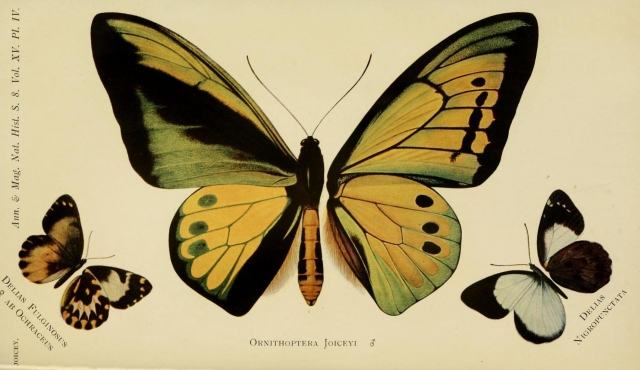Children are naturally curious about the world around them. From the moment they can crawl, they reach for leaves, watch insects move, and marvel at animals they encounter.
This innate curiosity makes botany and zoology perfect subjects to introduce at a young age. But the way these subjects are presented makes all the difference.
The Montessori method is built on hands-on exploration and child-led discovery. Rather than memorizing facts from a textbook, children engage with real plants, animals, and thoughtfully designed materials that bring science to life.
This approach not only nurtures a love for learning but also helps children form a deeper connection to nature—something that feels especially important today, when so much of childhood is spent indoors.
At Dannico Woodworks, we believe that creating environments where children can independently explore topics like botany and zoology is just as essential as the furniture they use.
That’s why we design functional, child-friendly pieces that encourage independence, safety, and creativity—because learning begins with an environment that supports it.
Let’s take a closer look at how to introduce botany and zoology the Montessori way.
Why Botany and Zoology Matter in Montessori Education
Maria Montessori believed that by connecting children with nature, we help them see their role as caretakers of the earth. Learning about plants and animals isn’t just about identifying names—it’s about understanding ecosystems, interdependence, and the importance of stewardship.
Botany and zoology in Montessori classrooms (or homes) introduce children to:
- Observation skills – noticing details in leaves, flowers, or animal behavior.
- Classification skills – sorting plants and animals by characteristics.
- Respect for life – developing empathy for living things.
- Scientific thinking – asking questions, making predictions, and finding answers.
Instead of starting with abstract ideas, Montessori begins with the concrete—the real, tangible world around the child.
Practical Ways to Introduce Botany the Montessori Way
1. Nature Walks
One of the simplest and most effective ways to introduce botany is by going outside. Encourage children to collect leaves, flowers, or seeds (when appropriate) and bring them back for closer observation. Provide magnifying glasses so they can explore details like veins in leaves or the texture of bark.
2. Classified Cards and Matching Activities
Montessori classrooms often use classified cards—beautifully illustrated cards that show parts of a plant (roots, stem, leaves, flowers) or different categories of plants (trees, shrubs, herbs). Children can match cards, label them, or use them as a reference when studying real plants.
3. Plant Care and Gardening
Nothing teaches responsibility and observation better than caring for a plant. Allow your child to water, prune, and check the growth of houseplants or garden plants. In Montessori, the act of caring for plants is as valuable as studying them.
4. Parts of a Plant Puzzles
Montessori puzzles break down plants into parts like roots, stems, and leaves. These tactile tools help children understand structure while also preparing them for scientific vocabulary.
5. Creating a Nature Table
A small, accessible table where children can display flowers, leaves, or seeds they find is a wonderful way to bring botany indoors. Pairing this with child-sized furniture makes it inviting and manageable for them to explore independently.
Practical Ways to Introduce Zoology the Montessori Way
1. Observing Real Animals
Montessori encourages interaction with real animals where possible. This could be through visits to a petting zoo, setting up a bird feeder, or simply watching ants in the garden. Direct experience creates wonder and respect.
2. Animal Classification Activities
Children can sort animal figurines into categories such as mammals, birds, reptiles, amphibians, and fish. Montessori materials often introduce these through simple, hands-on classification games.
3. Animal Puzzles and Models
Just like botany puzzles, zoology puzzles break down animals into parts (head, body, wings, legs). This tactile exploration helps children learn anatomy in a concrete way.
4. Storytelling and Picture Books
Books that highlight different animals, their habitats, and behaviors can spark curiosity and lead to further questions. Montessori emphasizes following the child’s interest—if they’re fascinated by whales, build lessons and activities around that theme.
5. Care for Pets
If your family has a pet, children can participate in age-appropriate care routines such as feeding, grooming, or walking. These activities teach empathy, responsibility, and respect for living creatures.
Creating a Montessori-Inspired Environment for Learning
For children to fully embrace botany and zoology, the environment matters. In Montessori, everything is thoughtfully arranged at the child’s level so they can access and interact with materials independently.
At Dannico Woodworks, we design furniture that supports this independence. For example:
- Child-sized tables and shelves make it easy for children to reach their plant care tools or zoology cards without relying on an adult.
- Durable, natural wood materials reflect the Montessori emphasis on simplicity and connection to nature.
- Safe and functional designs give parents peace of mind while allowing children to explore freely.
When children have access to materials in a carefully prepared space, their curiosity naturally leads the way.
FAQs
What age is best to start teaching botany and zoology in Montessori?
Children as young as three can begin exploring simple plant and animal activities. Start with hands-on observation and gradually introduce classification and terminology as they grow.
Do I need special Montessori materials?
While Montessori-specific puzzles and cards are wonderful, you can start with simple activities like gardening, nature walks, or sorting toy animals. The key is to focus on real, hands-on experiences.
How do Montessori lessons in botany and zoology differ from traditional science lessons?
Traditional lessons may begin with abstract definitions or textbook explanations. Montessori starts with concrete experiences—real plants, real animals, and tactile materials—and then moves toward abstraction.
How can I bring Montessori botany and zoology into my home?
Create a small, accessible learning space with child-sized furniture, a few plants, a basket of animal figurines, and a nature table. Keep it simple and let your child’s curiosity lead.
Conclusion
Introducing botany and zoology the Montessori way is about more than teaching science—it’s about nurturing curiosity, responsibility, and a lifelong love for nature.
By creating an environment where children can freely explore, touch, and observe, we empower them to see themselves as active participants in the natural world.
At Dannico Woodworks, we’re proud to design furniture that supports this independence and exploration, helping families bring Montessori-inspired learning into everyday life.
So, how will you introduce the wonders of plants and animals to your child—and what small changes could you make in your home environment to inspire that discovery?






